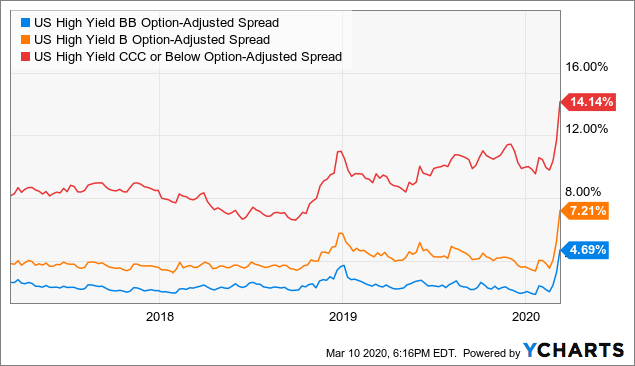
What is asset allocation? Simply put, it is a process by which your money is allocated among some - or all - of the asset classes, which include stocks, bonds, cash, and other secondary assets. It is difficult to know how to allocate your money. Once you know what risks you are comfortable taking, you can start dividing your money accordingly. To learn more, read on! This article hopefully answered your question.
Asset allocation refers to the division of your money between stocks, bonds and cash.
Investors may wonder how to allocate their money so that they can achieve their financial goals. The answer depends on your personal situation, as asset allocation is a multistep process and involves balancing risk and reward. An investor may wish to invest in multiple asset types, with the proportions depending on their risk tolerance, time horizon and investment goals.

It is based upon your risk tolerance
Your financial security, age and other factors may influence how high or low you are able to tolerate risk. You would have a higher risk tolerance if you were to invest in stocks or bonds, and be less likely to lose money. Low risk tolerance means that you would invest less in bonds and stocks, but would still have more of each. When making investment decisions, risk tolerance is an important consideration.
It is not an easy, one-time process.
You may discover that your portfolio is either under- or over-allocated. To keep your portfolio in line with future plans and current needs, allocations must be constantly adjusted. Your allocations should be reviewed regularly. If you have any questions you can reach out to a financial adviser. There are many approaches to asset allocation. Which one is best for you and your risk tolerance will determine the right one.
It's a complicated process
Asset allocation is the process of dividing your investment dollars among the various types of assets available in the market. These types of assets are classified into three major classes: stocks, bonds, and cash. Although there may be other assets that are suitable, the most popular ones are stocks, cash, bonds, or both. Asset allocation is meant to minimize volatility while maximising return. Your investment goals, risk tolerance, investment horizon and personal goals will all influence the distribution of your portfolio. These factors are subject to change, so it is important you know how they can impact your strategy.
It is an important component of any investment approach
An asset allocation strategy allows you to split your investments among different assets in order reduce risk and maximize your reward. Asset allocation is a way to take into consideration your time horizon and risk tolerance in order determine the appropriate amount of each type. It also allows you to account for unexpected expenses. These are the basics of asset allocation.

It can impact the performance of your portfolio
It is important to understand how to best allocate your assets in order to maximize your return relative the risk you are willing to take. To reduce risk and increase returns, an effective asset allocation strategy uses a combination of assets. Using ETFs or mutual funds can help you achieve this. Asset allocation is another option that can offer diversification. ETFs allow for diversification but keep the focus on individual stocks.
FAQ
Why is a stock called security.
Security is an investment instrument whose value depends on another company. It may be issued either by a corporation (e.g. stocks), government (e.g. bond), or any other entity (e.g. preferred stock). If the underlying asset loses its value, the issuer may promise to pay dividends to shareholders or repay creditors' debt obligations.
How Do People Lose Money in the Stock Market?
The stock exchange is not a place you can make money selling high and buying cheap. It is a place where you can make money by selling high and buying low.
The stock exchange is a great place to invest if you are open to taking on risks. They will buy stocks at too low prices and then sell them when they feel they are too high.
They want to profit from the market's ups and downs. If they aren't careful, they might lose all of their money.
What are the advantages to owning stocks?
Stocks have a higher volatility than bonds. The value of shares that are bankrupted will plummet dramatically.
But, shares will increase if the company grows.
In order to raise capital, companies usually issue new shares. This allows investors to buy more shares in the company.
Companies borrow money using debt finance. This gives them cheap credit and allows them grow faster.
A company that makes a good product is more likely to be bought by people. The stock price rises as the demand for it increases.
The stock price should increase as long the company produces the products people want.
Can you trade on the stock-market?
Everyone. Not all people are created equal. Some people have more knowledge and skills than others. They should be rewarded for what they do.
However, there are other factors that can determine whether or not a person succeeds in trading stocks. For example, if you don't know how to read financial reports, you won't be able to make any decisions based on them.
You need to know how to read these reports. Each number must be understood. Also, you need to understand the meaning of each number.
You will be able spot trends and patterns within the data. This will help you decide when to buy and sell shares.
This could lead to you becoming wealthy if you're fortunate enough.
How does the stockmarket work?
You are purchasing ownership rights to a portion of the company when you purchase a share of stock. Shareholders have certain rights in the company. A shareholder can vote on major decisions and policies. He/she can demand compensation for damages caused by the company. He/she also has the right to sue the company for breaching a contract.
A company cannot issue shares that are greater than its total assets minus its liabilities. This is called capital sufficiency.
A company that has a high capital ratio is considered safe. Low ratios can be risky investments.
Statistics
- "If all of your money's in one stock, you could potentially lose 50% of it overnight," Moore says. (nerdwallet.com)
- Even if you find talent for trading stocks, allocating more than 10% of your portfolio to an individual stock can expose your savings to too much volatility. (nerdwallet.com)
- The S&P 500 has grown about 10.5% per year since its establishment in the 1920s. (investopedia.com)
- For instance, an individual or entity that owns 100,000 shares of a company with one million outstanding shares would have a 10% ownership stake. (investopedia.com)
External Links
How To
How to create a trading plan
A trading plan helps you manage your money effectively. It will help you determine how much money is available and your goals.
Before you start a trading strategy, think about what you are trying to accomplish. You may want to make more money, earn more interest, or save money. If you're saving money you might choose to invest in bonds and shares. If you are earning interest, you might put some in a savings or buy a property. You might also want to save money by going on vacation or buying yourself something nice.
Once you have an idea of your goals for your money, you can calculate how much money you will need to get there. This depends on where you live and whether you have any debts or loans. Consider how much income you have each month or week. Your income is the amount you earn after taxes.
Next, make sure you have enough cash to cover your expenses. These include rent, bills, food, travel expenses, and everything else that you might need to pay. Your monthly spending includes all these items.
Finally, figure out what amount you have left over at month's end. This is your net discretionary income.
You're now able to determine how to spend your money the most efficiently.
Download one online to get started. You can also ask an expert in investing to help you build one.
Here's an example of a simple Excel spreadsheet that you can open in Microsoft Excel.
This shows all your income and spending so far. This includes your current bank balance, as well an investment portfolio.
Here's another example. This was designed by a financial professional.
It will help you calculate how much risk you can afford.
Don't try and predict the future. Instead, be focused on today's money management.